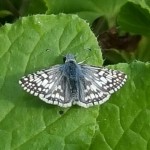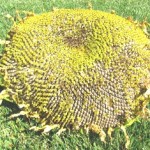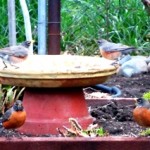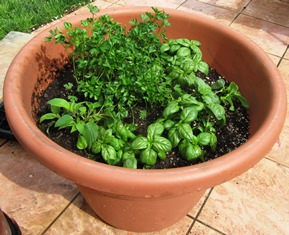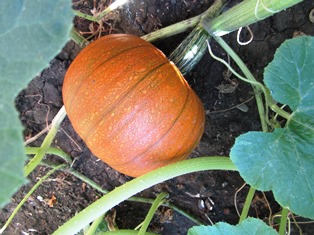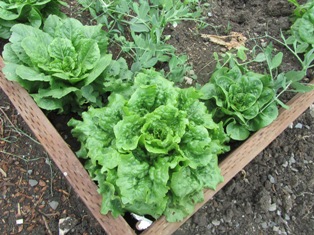Celebrating the Fourth–Hankering For Nostalgia
On the farm where I grew up in central Missouri, we celebrated the Fourth of July with a fish fry. We caught blue gill, bass, crappie, and catfish in my grandfather’s stocked ponds or from nearby Perche Creek.
After my brother, cousins, and I played games until dark and then chased fireflies, my grandmother would set out dessert–a simple blackberry pie, shortcake and berries with homemade ice cream, or a pineapple upside down cake. A grownup would surprise us kids with sparklers that we would light and wave as we ran around in the dark.
Feeling nostalgic for those old days and ways of celebrating, I’m going to shuck and cook corn on the cob and grill some salmon with fresh veggies from the garden for this–our eighth celebration of this holiday on the farmette. There’s a ton of summer squash that I’ll douse with olive oil and sprinkle with seasoning before grilling.
For the salmon, I make a easy-peasy mango-lime-cilantro salsa. Chop red onion and red and green bell pepper. Cube slices of fresh mango. Take a handful of cilantro that’s been tightly rolled and chop it into ribbons. Mix everything together, sprinkle with sugar, and generously drizzled with fresh lime juice. Serve well chilled over the grilled salmon.
I’ve already whipped up a pineapple upside down cake and baked it in my 10-inch cast iron skillet. To save time, I used a yellow cake mix and added a dash of rum and pineapple juice for flavor. Recipe is below.
QUICK PINEAPPLE UPSIDE DOWN CAKE
Ingredients:
1/2 cup plus 2 Tablespoons butter
1 1/4 cups sugar
7-8 slices of canned pineapple
7-8 maraschino cherries
1 box yellow cake mix
1 Tablespoon dark rum
1/8 cup pineapple juice
Directions:
Preheat oven to 350 degrees Fahrenheit
In a cast iron skillet over medium heat, melt the butter. Add the sugar and stir until the sugar turns light brown (roughly 5 to 7 minutes). Remove from heat. Carefully lay in the pineapple slices. Place a cherry in the center of each fruit ring.
Make the cake according to directions on the box. Add the rum to the batter. Pour over the pineapple slices in the skillet.
Place the skillet on the middle rack in the oven and bake the cake at 350 for 30-40 minutes. Guard against over browning of the top. If necessary, lay a layer of aluminum foil over the cake near the end of the bake time. Use a knife around the cake edges to loosen from the skillet. Turn upside down onto a cake plate. Enjoy.
_______________________________________________________________
If you’re interested in farmette topics and storytelling, check out my Henny Penny Farmette series of mysteries. All three books in the series are available in numerous formats and can be ordered from Amazon, Barnes and Noble, and elsewhere online as well as from traditional bookstores everywhere.
These cozy mysteries make great summer reading and they include delicious recipes, tips for keeping bees and chickens, and facts and tidbits about growing heirloom vegetables and herbs.
Please see more at http://tinyurl.com/ya5vhhpm
Plant for the Pollinators
I seldom need an occasion to put in another bed of flowers, but this is National Pollinator Week. I think a new bed is in order to attract local bees, birds, bats, and butterflies–all considered pollinators. Having these small creatures around benefits landscapes, gardens, and orchards.
The U.S. Fish and Wildlife Service has noted that over 75 percent of our plants are pollinated by birds, animals, and insects. We can help ensure these creatures will be around for a long time if we restore their habitats and ensure they have food and water.
There are many lovely plants you can grow that don’t require a lot of care.
- lavender
- bee balm
- echinacea
- sage
- cilantro
- thyme
- sunflowers
- sweet alyssum
- anemone
- borage
- geraniums
- scented pelargoniums
- mint
A tapestry of colorful herbs and flowers beautifies your landscape and pollinators love the diversity. If you don’t have a lot of space, grow some of these plants in planter boxes, clay pots, or other types of containers.
Put in a water feature, too, such as a table-top or larger fountain that recycles water. Even a pottery saucer filled each day can attract pollinators.
It won’t take long for the bees and hummingbirds to find the water. Their frequent visits are fun to watch, and they’ll likely be sipping throughout the day.
_________________________________________________________________________
If you enjoy reading about farmette topics, check out my Henny Penny Farmette series of cozy mysteries from Kensington Publishing. My newest novel includes delicious recipes, tips on keeping bees and chickens, and much more. Click on this URL for more information, http://tinyurl.com/ya5vhhpm
.
Heirloom Herbs for the Kitchen
The green stalks of the red and yellow onions I planted in late summer are now up about a foot in a raised bed. The garlic that I planted around the same time is also poking up. Having onions, garlic, and fresh culinary herbs available year-round is not impossible in the Bay Area’s mild climate, especially when they are grown in cold frames, protected areas, and raised beds.
Some will re-seed themselves in the growing beds or around your yards. We’ve got Greek oregano and chives growing all over the place. Some of my favorites herbs include basil, cilantro, chervil, chives, dill, fennel, lemon balm, lavender, oregano, mint, marjoram, rosemary, thyme, parsley, sage, and savory.
We also grow a few ornamental herbs such as borage, hyssop, and catnip (for our new kitty), tea herbs (chamomile and mint), and medicinal herbs (like echinacea).
Herbs are easy to grow. Their blooms will attract insects beneficial to the garden. Butterflies and hummingbirds are also attracted. And herbs don’t need much–light, and porous soil, warmth, and decent drainage. For a light feeding of the herbs, we make chicken poop tea. With so many varieties of herbs available, why not tuck a few in your garden or in containers in a protected but sunny and warm area of your patio to enjoy in your culinary creations?
Herbs to Flatter Vegetables, Flavor Meat, and Finesse Fertility

If you have limited space, use taller herbs like this lavender in your landscape and gr0w smaller plants like mint in pots
Herb gardens have always held a fascination for me. One of the many reasons I love growing herbs is the scent that many herbs release with bruising that can occur when you brush against plants such as bee balm, rosemary, or lavender.
Most herbs contain fragrant oils (verbena and lavender, for example) that are frequently used in the making of cosmetics. Many herbs reseed themselves, ensuring a perennial supply for medicinal and culinary uses.
For thousands of years, herbs have been added to food to enhance the flavors. In fact, many cuisines of the world are distinctly identifiable from herbs and mixtures of them added to the food. Imagine Italian marinara without the addition of basil in the tomato sauce; a French meat or vegetable dish without savory, fennel, sorrel, rosemary, or tarragon; or an English traditional dish without bay leaf, marjoram, garlic, or mint. Consider Greek food without rosemary, thyme, or arugula.
Herbs have been used to flavor vinegar, olive oil, and liqueur. Herbs even play a role in amorous arousal. In France, Verveine du Velay is a vervain-flavored liquer popular in Le Puy. It’s reputation is further enhanced by the popular ages-old perception of it as an aphrodisiac. According to author Jade Britton (The Herbal Healing Bible, Chartwell Books, Inc.), the herbs Siberian ginseng, damiana, and saw palmetto have been used in remedies to treat male infertility along with gingko for increased blood supply to the male sex organ. See, http://www.amazon.com/The-Herbal-Healing-Bible-Traditional/dp/0785829652
While many herbs thrive in well-drained, sunny positions in the garden, others do equally well in part sun/shade. For shade-tolerant herbs, plant the following.
Chives
Cilantro/Coriander
Garlic
Lovage
Lemon Balm
Mint
Oregano
Parsley
Sweet Woodruff
Thyme
You can grow herbs in a pot, a coffee can, a half wine barrel, window box, even an old wheel barrow. The point is that herbs are not too fussy. Some are so vigorous as to be considered invasive (mint, for example). So whether you seek the enhance the flavor of food, add pizazz to a meat dish, or to increase your stamina, libido, and overall health, maybe it’s time to plant your own herb garden and see what herbs can do for you.
Cool Season Plantings for Soup, Salad, and Pie
This time of year the French sugar pumpkins, persimmons and pomegranates are ready to harvest and that means it’s also time to plant cool season crops.

My summer onions formed large bulbs that I have already harvested; it’s time to replace them with bunching onions
Yesterday I turned the dirt in one of my large planting boxes, added in some aged manure and other soil amendments, and planted red and yellow onions for soups and salads during the fall and winter. I harvested seed from my summer onions and during the winter months will grow the seed in flats for spring planting.
The cool days ahead are perfect soup days and that means carrots, fennel, cilantro, cauliflower, potatoes, and bok choy will also find a place in my fall and winter garden.
In other raised beds and boxes, I’m planting heirloom lettuces, radishes, and spinach. These traditional salad ingredients are best grown during the fall or early spring as hot weather tends to make them bolt.
The pumpkins are ready for pie-making and Halloween carving. The persimmons are perfect for custards or for eating fresh when absolutely ripe (otherwise, the fruits are so tart they will make you pucker). And those lovely red pomegranate seeds are delicious eaten raw or tossed into salads.
For a list of Northern California cool seasons vegetables, check out Sunset Magazine’s edible gardening guide at http://www.sunset.com/garden/garden-basics/cool-season-crops-00400000042441/. If you plant to purchase seed f0r your own cool season garden, I urge you to choose non-genetically modified and open-pollinated seeds so that you can harvest.
 Facebook
Facebook Goodreads
Goodreads LinkedIn
LinkedIn Meera Lester
Meera Lester Twitter
Twitter








